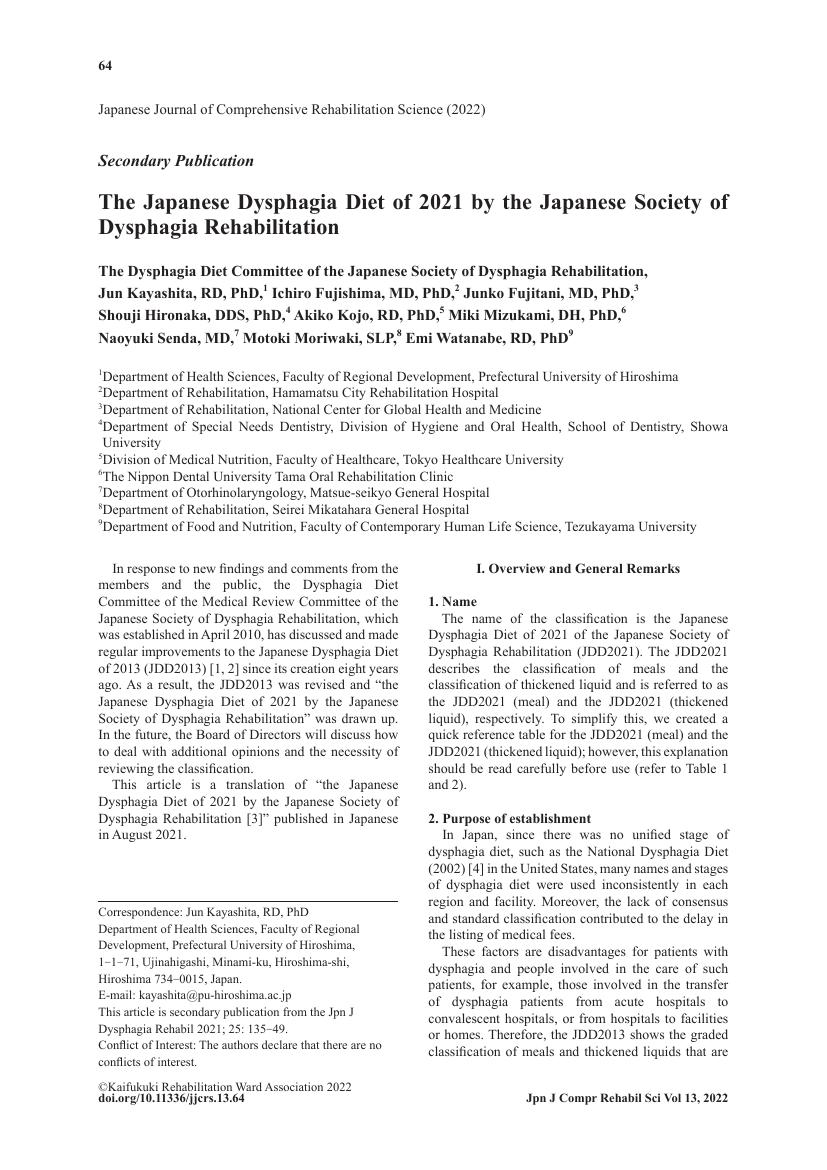- 著者
- Ahmed Arafa Yoshihiro Kokubo Keiko Shimamoto Rena Kashima Emi Watanabe Yukie Sakai Jiaqi Li Masayuki Teramoto Haytham A. Sheerah Kengo Kusano
- 出版者
- The Japanese Society for Hygiene
- 雑誌
- Environmental Health and Preventive Medicine (ISSN:1342078X)
- 巻号頁・発行日
- vol.27, pp.10, 2022 (Released:2022-03-04)
- 参考文献数
- 10
- 被引用文献数
- 13
Background: A protective role for physical activity against the development of atrial fibrillation (AF) has been suggested. Stair climbing is a readily available form of physical activity that many people practice. Herein, we investigated the association between stair climbing and the risk of AF in a Japanese population.Methods: In this prospective cohort study, we used data of 6,575 people registered in the Suita Study, aged 30–84 years, and had no history of AF. The frequency of stair climbing was assessed by a baseline questionnaire, while AF was diagnosed during the follow-up using a 12-lead ECG, health records, check-ups, and death certificates. We used the Cox regression to calculate the hazard ratios and 95% confidence intervals of AF incidence for climbing stairs in 20–39%, 40–59%, and ≥60% compared with <20% of the time.Results: Within 91,389 person-years of follow-up, 295 participants developed AF. The incidence of AF was distributed across the stair climbing groups <20%, 20–39%, 40–59%, and ≥60% as follows: 3.57, 3.27, 3.46, and 2.63/1,000 person-years, respectively. Stair climbing ≥60% of the time was associated with a reduced risk of AF after adjustment for age and sex 0.69 (0.49, 0.96). Further adjustment for lifestyle and medical history did not affect the results 0.69 (0.49, 0.98).Conclusion: Frequent stair climbing could protect from AF. From a preventive point of view, stair climbing could be a simple way to reduce AF risk at the population level.
- 著者
- Ahmed Arafa Yoshihiro Kokubo Haytham A. Sheerah Yukie Sakai Emi Watanabe Jiaqi Li Kyoko Honda-Kohmo Masayuki Teramoto Rena Kashima Masatoshi Koga
- 出版者
- Japan Atherosclerosis Society
- 雑誌
- Journal of Atherosclerosis and Thrombosis (ISSN:13403478)
- 巻号頁・発行日
- pp.63191, (Released:2021-11-20)
- 参考文献数
- 55
- 被引用文献数
- 14
Aim: Weight change could have many health outcomes. This study aimed to investigate the association between weight change and mortality risk due to total cardiovascular disease (CVD), ischemic heart disease (IHD), and stroke among Japanese. Methods: We used Suita Study data from 4,746 people aged 30-79 years in this prospective cohort study. Weight change was defined as the difference between baseline weight and weight at age 20. We used Cox proportional hazards models to calculate hazard ratios (HRs) and 95% confidence intervals (CIs) of total CVD, IHD, and stroke mortality for 1) participants with a weight change (>10, 5 to 10, -5 to -10, and <-10 kg) compared to those with stable weight (-4.9 to 4.9 kg) and 2) participants who moved from one body mass index category (underweight, normal weight, or overweight) to another compared to those with normal weight at age 20 and baseline. Results: Within a median follow-up period of 19.9 years, the numbers of total CVD, IHD, and stroke mortality were 268, 132, and 79, respectively. Weight loss of >10 kg was associated with the increased risk of total CVD mortality 2.07 (1.29, 3.32) and stroke mortality 3.02 (1.40, 6.52). Moving from normal weight at age 20 to underweight at baseline was associated with the increased risk of total CVD, IHD, and stroke mortality: 1.76 (1.12, 2.77), 2.10 (1.13, 3.92), and 2.25 (1.05, 4.83), respectively. Conclusion: Weight loss, especially when moving from normal to underweight, was associated with the increased risk of CVD mortality.
- 著者
- Jun Kayashita Ichiro Fujishima Junko Fujitani Shouji Hironaka Akiko Kojo Miki Mizukami Naoyuki Senda Motoki Moriwaki Emi Watanabe
- 出版者
- Kaifukuki Rehabilitation Ward Association
- 雑誌
- Japanese Journal of Comprehensive Rehabilitation Science (ISSN:21855323)
- 巻号頁・発行日
- vol.13, pp.64-77, 2022 (Released:2023-02-28)
- 参考文献数
- 16
- 被引用文献数
- 13
- 著者
- Jiaqi Li Yoshihiro Kokubo Ahmed Arafa Haytham A. Sheerah Makoto Watanabe Yoko M. Nakao Kyoko Honda-Kohmo Rena Kashima Yukie Sakai Emi Watanabe Masayuki Teramoto Tomoharu Dohi Masatoshi Koga
- 出版者
- Japan Atherosclerosis Society
- 雑誌
- Journal of Atherosclerosis and Thrombosis (ISSN:13403478)
- 巻号頁・発行日
- pp.63317, (Released:2022-01-15)
- 参考文献数
- 25
- 被引用文献数
- 6
Aims: This study aimed to investigate the association of mild hypertensive retinopathy with cardiovascular disease (CVD) risk. Methods: A total of 7,027 residents aged 30–79 years without a history of CVD participated in the annual health checkups and retinal photography assessments. Retinal microvascular abnormalities were graded using the standard protocols and classified according to the Keith–Wagener–Barker classification. Mild hypertensive retinopathy was defined as grades 1 and 2. Cox proportional hazard model was used to calculate hazard ratios (HRs) and 95% confidence intervals (CIs) for total CVD and its subtypes according to the presence and absence of mild hypertensive retinopathy. Results: During a median follow-up of 17 years, 351 incident stroke and 247 coronary heart disease (CHD) cases were diagnosed. After adjustment for traditional cardiovascular risk factors, mild hypertensive retinopathy was positively associated with risk of CVD (multivariable HR=1.24; 95% CI, 1.04–1.49) and stroke (1.28; 1.01–1.62) but not with risk of CHD (1.19; 0.89–1.58). Generalized arteriolar narrowing and enhanced arteriolar wall reflex were positively associated with CVD risk, the multivariable HR (95% CI) was 1.24 (1.00– 1.54)and 1.33 (1.02–1.74), respectively. Moreover, mild hypertensive retinopathy was positively associated with stroke risk in normotensive participants. Conclusion: Mild hypertensive retinopathy was positively associated with CVD and stroke risk in the urban Japanese population. Especially, generalized arteriolar narrowing and enhanced arteriolar wall reflex were positively associated with CVD risk. These findings suggested that retinal photography could be helpful for cardiovascular risk stratification in the primary cardiovascular prevention.
